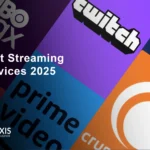In an era flooded with information and competing narratives, strategic content creation has become an essential weapon for any organization seeking to earn and sustain trust. Brands that communicate with clarity, structure, and authenticity win more loyal audiences, generate higher engagement, and ultimately convert better. But strategic content goes far beyond writing well—it’s about building a framework of reliability, transparency, and authority in every piece of communication.
Inhaltsübersicht
1. Trust as a Competitive Advantage
When customers or stakeholders trust you, they’re more likely to:
- Advocate for your brand
- Choose your products or services over competitors
- Forgive occasional mistakes
- Stick with you long-term
Trust isn’t a luxury—it’s the foundation of sustainable business growth. Strategic content is how you earn it consistently.
2. Clarity, Relevance, and Accuracy
Every high-impact message must pass three tests:
- Is it clear? Avoid jargon. Use active voice. Break ideas into digestible blocks.
- Is it relevant? Speak directly to the needs, concerns, and goals of your audience.
- Is it accurate? Cite sources, verify claims, and never overpromise.
These elements reduce friction and elevate content from mere information to a credible brand asset.
The Role of Outsourcing Technical Writing
Outsourcing technical writing allows companies to produce deeply informed, polished content without stretching internal resources.
Wichtigste Vorteile:
- Specialized expertise: Professional writers can explain complex topics in simple terms.
- Consistency at scale: Maintain tone, format, and factual integrity across documents.
- Speed and flexibility: Projects are delivered faster without disrupting internal teams.
For industries like SaaS, healthcare, or engineering, outsourced writers are not optional—they’re strategic allies.
Structuring Content to Reinforce Credibility
A well-structured piece of content is easier to consume and signals professionalism. Here’s how to structure for trust:
H1, H2, H3 hierarchy:
- Organize ideas logically.
- Use descriptive subheadings.
Short paragraphs:
- Ideal length: 3–5 lines.
- Improves scan-ability and mobile readability.
Bullet points and numbered lists:
- Emphasize clarity.
- Accelerate comprehension.
Data visuals and callouts:
- Use charts, infographics, and bold quotes.
- Reinforce key messages visually.
Multi-Channel Strategic Content Deployment
To amplify trust, your content strategy should extend across channels:
- Website: Long-form articles, landing pages, white papers
- E-Mail: Newsletters, onboarding sequences, personalized outreach
- Social media: Bitesized insights, authentic storytelling, community engagement
- Video & webinars: Humanize your message and increase retention
Consistency across platforms signals brand maturity and builds user confidence.
Strategic Content Best Practices for Maximum Impact
1. Know Your Audience Intimately
Create audience personas to define:
- Demographics
- Pain points
- Language preferences
- Content consumption habits
2. Maintain a Content Calendar
- Set publishing cadence (e.g., 2 SEO articles/month + weekly LinkedIn posts)
- Balance evergreen vs. topical content
3. Transparent Communication
- Disclose data sources
- Acknowledge limitations
- Include disclaimers where needed
4. Authentic Storytelling
- Share case studies, testimonials, and user journeys
- Highlight failures as well as wins
5. Continual Optimization
- Use analytics to track bounce rate, session time, and conversions
- Refine headlines, calls-to-action, and layouts based on performance
How to Measure Content Trustworthiness
Track these content trust metrics zu assess the health of your strategy:
- Engagement rate: Comments, shares, and time on page
- Conversion rate: Form fills, downloads, subscriptions
- Bounce rate: High rate may signal weak credibility
- Backlinks earned: Indicator of authoritative content
- Customer feedback: Direct input via surveys or reviews
Conclusion: Strategic Content Creation is Your Trust Engine
Trust is not gebaut overnight—but it compounds when you invest in clarity, relevance, and consistency. Whether you’re communicating with clients, team members, or a broader audience, strategic content creation will determine how credible and impactful your voice truly is.
Instead of shouting louder, start speaking smarter.
FAQ – Strategic Content Creation
1. What is strategic content creation? Strategic content creation is the deliberate planning and structuring of communication assets (articles, videos, white papers, etc.) to build trust, engage audiences, and achieve business objectives.
2. How does content build trust with an audience? By being clear, accurate, helpful, and relevant to the reader’s needs, content builds a sense of reliability and authority over time.
3. Should I outsource my technical writing? Yes—if your team lacks the time or specialized knowledge, outsourcing ensures quality, speed, and consistency across deliverables.
4. How often should I publish content to maintain trust? Aim for at least one high-quality content piece per week and maintain consistency over time with a documented editorial calendar.
5. What tools help structure credible content? Use H1-H3 headings, bullet points, short paragraphs, embedded visuals, and call-to-actions to improve trust and engagement.





